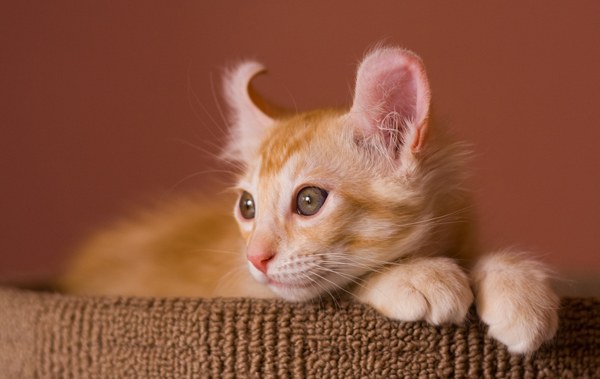The cat’s ear is another marvel of feline engineering. Like a sophisticated satellite antenna that picks up a signal, the cat’s outer ear, or horn, swivels up to 180 degrees to locate and identify the smallest sounds.
If dogs are known for their very fine hearing, that of cats is even more developed and also deserves a little praise. Here are 5 things you may not know about your cat ears.
5. Cat ears are critical to your cat’s balance
 Inside the cats’ ears are three semicircular canals filled with fluid and lined with tiny hairs. The movement of the fluid on hairs indicates to the cat’s brain the direction in which he is moving.
Inside the cats’ ears are three semicircular canals filled with fluid and lined with tiny hairs. The movement of the fluid on hairs indicates to the cat’s brain the direction in which he is moving.
Another small body, the vestibule, gives him information about his position. It transmits information about whether he’s right-side up, upside down, lying on his side, and so on
This vestibule, like the semicircular canals, is crucial to the cat’s “righting reflex,” which allows him to land on his feet (most of the time) if he falls.
4. Cat’s ears serve as a mood barometer
Standing, bent, folded, turned to the side … the ears of cats are true mood barometers.
The position of the ears of our cats reveals a very wide range of emotions, ranging from joy to curiosity, through fear.
3. Unexplained peculiarities.
You may have noticed that cats have skin folds that look like small slits on the outer bases of their ears. This peculiarity called “Henry’s pocket” is a normal part of his ear. What is even more surprising is that scientists have failed to come to a mutual conclusion about the functions of this feature in cats and other mammals such as bats, foxes, and even some breeds of dogs.
2. Cats have super-powered hearing
Cats hear lower and higher frequencies than dogs and people do. The cat can perceive sounds between 45 to 64 000 Hz, compared to 67 to 45 000 Hz in dogs and between 20 to 23 000 Hz in humans.
Cats are predators by nature and being able to hear a wider range of sounds helps them to detect a wide range of prey species and gives them a chance to hear and avoid their own predators.
1. Each cat ear is controlled by 32 muscles
No less than 32 muscles control the so small ears of cats. Awesome!
These muscles help them determine the precise direction from which a sound is coming and move towards that source. They allow each ear to rotate up to 180 degrees to detect the source of noises, even slight squeaks, and rustles.
Related Articles
- 4 Amazing Tips on Getting Your Cat to Be More Affectionate
- How To Stop Your Cat From Biting You
- How To Keep Your Cat Safe
- 5 Foods You Didn’t Know Were Good For Your Cat









